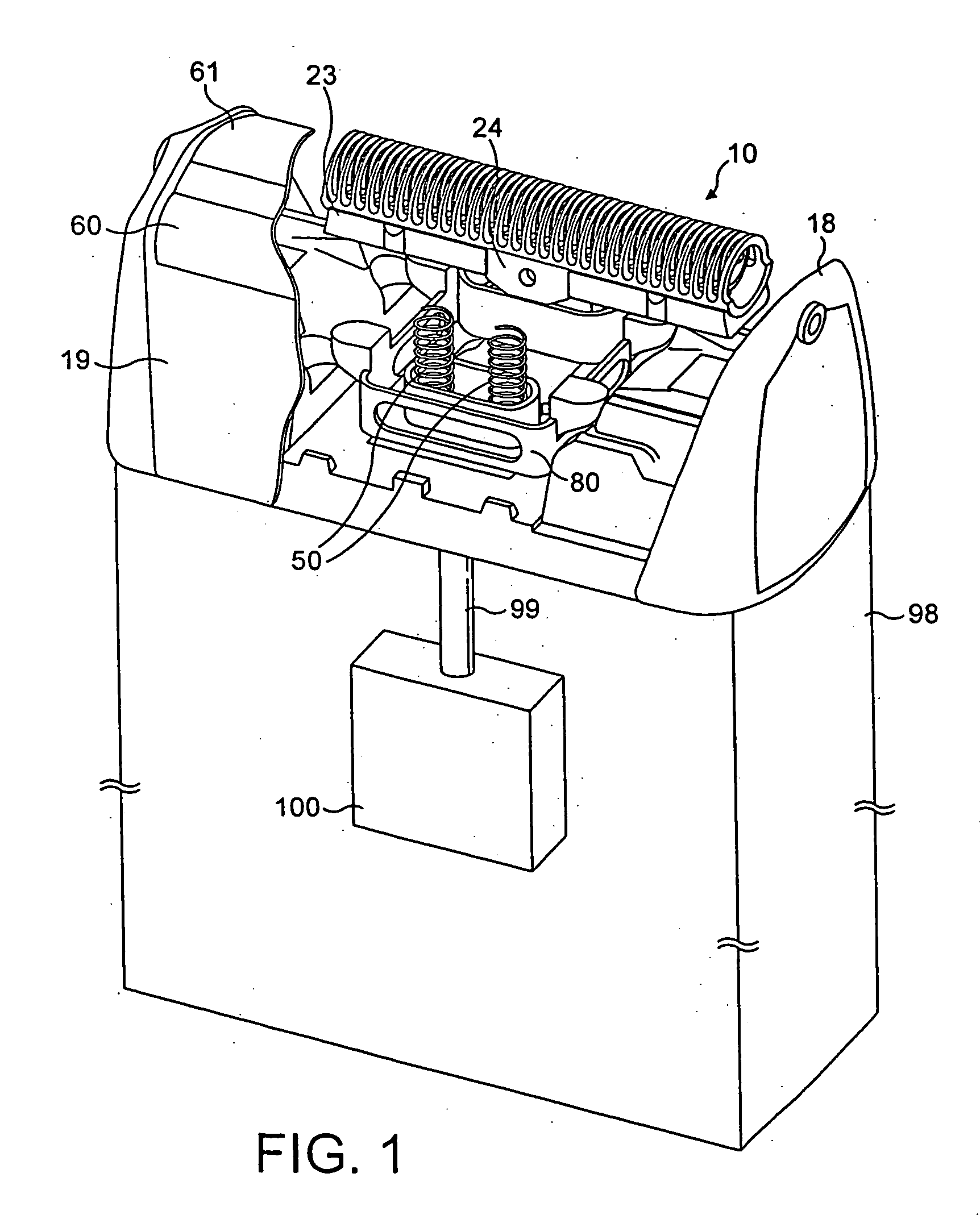Undercutter for a shaving apparatus
a shaving apparatus and undercutter technology, applied in the field of shaving apparatus, can solve the problems of unbalanced blade block, dusty debris, and insufficient cutting of shaved skin, and achieve the effects of improving cutting efficiency, increasing the number of cutting events or potential cutting events, and increasing the speed of the drive motor
- Summary
- Abstract
- Description
- Claims
- Application Information
AI Technical Summary
Benefits of technology
Problems solved by technology
Method used
Image
Examples
Embodiment Construction
[0042]FIG. 1 shows a shaver having a shaver head of the type having two cutter units, each having a respective undercutter assembly and an outer cutter or foil. For clarity, FIG. 1 shows only a scrap view of the outer cutters 60,61 (which are conventional) mounted in a foil frame 19. A first undercutter assembly 10 is shown complete in its assembled condition. Only part of the second undercutter assembly is shown.
[0043] Each undercutter assembly such as 10′ comprises a primary cutter, a secondary cutter, a support block 23, and a sub-mounting 80 which carries a spring 50, preferably at least two springs 50, as illustrated in FIG. 1. For the second undercutter assembly, only the sub-mounting 80 and two springs 50 are shown. It is understood that presence of spring or springs 50 is not essential to practicing the present invention, but is preferred for better shaving efficiency. It is understood that the sub-mounting 80 is part of the drive block, which is known in the art and is con...
PUM
| Property | Measurement | Unit |
|---|---|---|
| weights | aaaaa | aaaaa |
| length | aaaaa | aaaaa |
| width | aaaaa | aaaaa |
Abstract
Description
Claims
Application Information
 Login to View More
Login to View More - R&D
- Intellectual Property
- Life Sciences
- Materials
- Tech Scout
- Unparalleled Data Quality
- Higher Quality Content
- 60% Fewer Hallucinations
Browse by: Latest US Patents, China's latest patents, Technical Efficacy Thesaurus, Application Domain, Technology Topic, Popular Technical Reports.
© 2025 PatSnap. All rights reserved.Legal|Privacy policy|Modern Slavery Act Transparency Statement|Sitemap|About US| Contact US: help@patsnap.com



